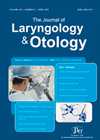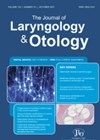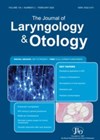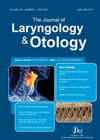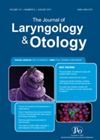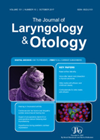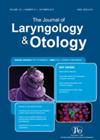
Journal Reviews
Postoperative bleeding rates after inferior turbinate reduction using three different techniques
The most serious complication of inferior turbinate reduction surgery is postoperative bleeding, soon after the operation or later on. In this study comprising 751 patients, the authors have compared three common methods. Partial turbinectomy involved resection of the inferior turbinate,...
A more comprehensive management for eosinophilic chronic rhinosinusitis after FESS
In recent years there has been increasing recognition of eosinophilic chronic rhinosinusitis which, in particular, results in persistent symptoms and recurrence of nasal polyps, even after FESS surgery. It therefore calls for measures adjuvant to FESS to stop persistence of...
Assessment of temporal bone skills on 3D-printed temporal bones – a useful training curriculum?
The authors contend it is now archaic to follow Halstead’s model of surgical training, namely ‘see one, do one and teach one’. Simulated training is now widely used in many surgical specialities. With every surgical trainee having an individual learning...
Predictors of postoperative improvement after endoscopic sinus surgery in patients with chronic rhinosinusitis
Improvement after endoscopic sinus surgery in patients with chronic rhinosinusitis varies considerably. If elaborate preoperative and intraoperative data could be used to predict the postoperative course, management and length of the follow-up could be adjusted to provide optimal care. Two...
An unrecognised anatomical variant which may help frontal sinus surgery
Anatomic variants in the frontal sinus have significant implications in endoscopic sinus surgery. In this illustrative study, the authors describe a newly-observed anatomical variant – a mucosa lined prism‑shaped space between the most superior part of the nasal septum and...
Modern surgical treatment for obstructive sleep apnoea indicate suppression of inflammatory cytokines
This study comprises 57 patients, 29 of which were treated by anterior palatoplasty procedure, expansion sphincter pharyngoplasty and submucosal minimal invasive lingual excision techniques and 27 by CPAP therapy. Parameters to determine success were AHI, VAS score, ESS score, mean...
Does endoscopic stapling for pharyngeal pouch supersede open repair?
Endoscopic stapling for pharyngeal pouch is generally considered to be less invasive, safe and with fewer complications, resulting in quicker recovery and a shorter hospital stay. Whether these factors hold in the long-term follow-up is the subject of this interesting...
Does ‘weekend effect’ alter post tonsillectomy haemorrhage rates?
Staffing levels are generally low over the weekends and senior physicians are less easily available. It is generally believed that this affects patients undergoing high-risk surgery. Whether doing tonsillectomy at weekends adds to the risks of post tonsillectomy haemorrhage is...

